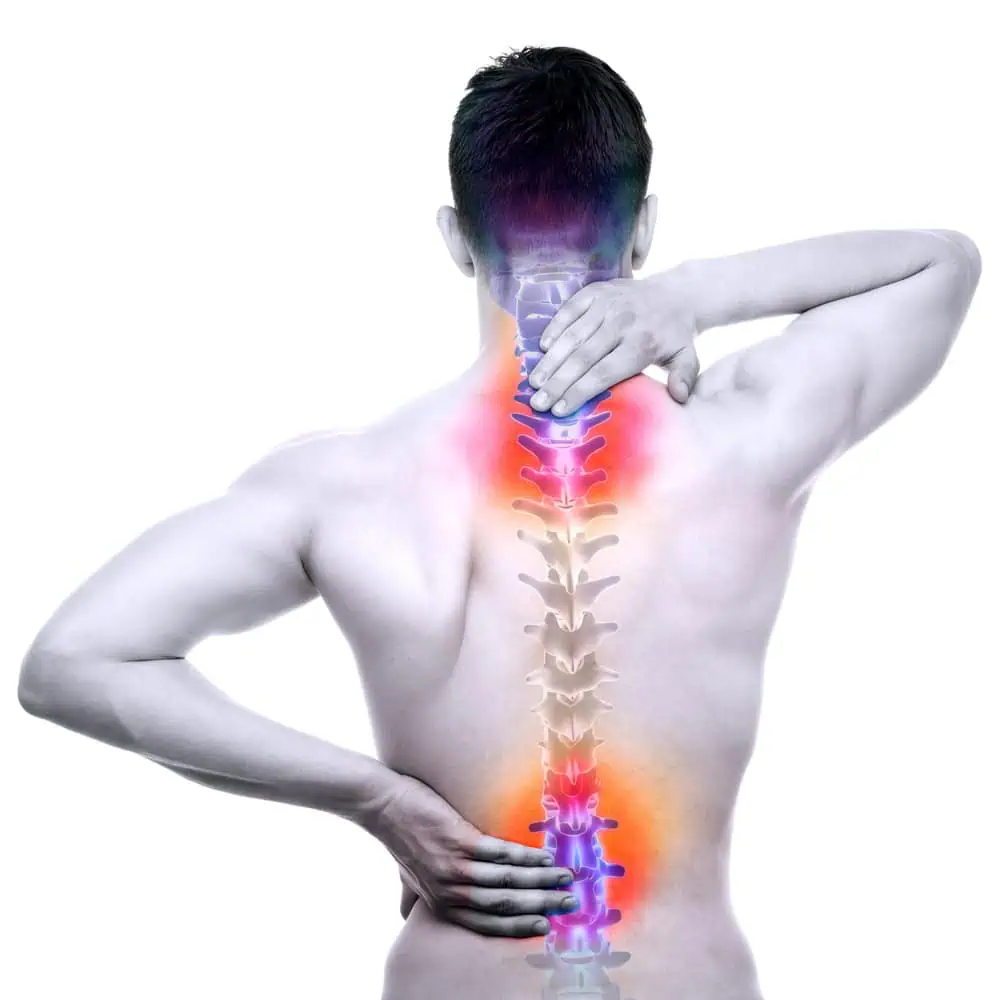Complex Regional Pain Syndrome (CRPS) Symptoms:
Complex regional pain syndrome (CRPS), previously called reflex sympathetic dystrophy (RSD), is a condition that generally affects the arms and legs. Complex regional pain syndrome pain symptoms can cause significant aching and burning pain in the arms or legs and may cause the limb to swell or feel hot or cold. In addition, CRPS symptoms may cause the skin on the arm or leg to change texture and color or become thin and shiny. CRPS symptoms/RSD symptoms may also include noticeable hair pattern changes (rapid hair growth or loss of hair), as well as increased sweating in the area of the pain.
CRPS symptoms can vary in their severity and duration. Complex regional pain syndrome (CRPS) symptoms can become continuous and intense over a period of time. If CRPS symptoms develop after an injury, the pain symptoms seem more intense or out of proportion to the severity of injury. Pain symptoms can also spread from the original site of injury to encompass the entire arm or leg. Complex regional pain syndrome pain symptoms can also be seen to affect the opposite extremity, as well. Emotional stress can cause the pain to worsen. You should seek CRPS pain management/RSD pain management from a complex regional pain syndrome specialist if you have the following typical symptoms of CRPS:
- Pain described as “burning” or “throbbing” that can be continuous.
- Hypersensitivity to cold or touch.
- Swelling and stiffness in the joints.
- Decreased motor function and disability.
- Changes in hair and nail growth pattern.
- Skin changes such as increased skin temperature, color changes (red, blotchy, pale, dark coloring), increased sweating, thin and shiny skin.
Complex Regional Pain Syndrome (CRPS) Causes:
Complex regional pain syndrome likely occurs from multiple factors producing the above pain symptoms. CRPS pain symptoms often occur after forceful trauma to a limb, such as a fracture, amputation or crush injury. Other “traumas” to the body can also cause CRPS, whether it is major or minor, including: surgery, heart attacks, infections and sprains. Emotional stress can also bring about or aggravate CRPS. It is not currently known why and exactly how CRPS symptoms are triggered, but it is believed that there is a dysfunction in the nervous system causing an inappropriate response and inflammation. Another thought is that CRPS may be caused by an immune response and healing process that has become disrupted and abnormal, causing symptoms of swelling, warmth and redness in the affected area.
There are two types of complex regional pain syndrome, each having similar signs and symptoms but different causes. CRPS type 1 occurs after an illness or injury without a known, direct damage to nerves in the affected limb. It is believed that the pain receptors in these patients become very sensitive to catecholamines, chemicals that work as messengers in the nervous system and are associated with the sympathetic limb of the nervous system often called the “fight or flight” system. CRPS type 2 occurs after a distinct nerve injury. Most CRPS patients, estimated to be around 90% of people, have CRPS type 1.
Complex Regional Pain Syndrome (CRPS) Risk Factors:
It is important that complex regional pain syndrome is diagnosed and treated by a CRPS specialist/RSD specialist early, otherwise it could progress to become more disabling. Symptoms of CRPS include atrophy (loss of muscle mass), or tissue wasting and contracture, or muscle tightening. Once an affected limb becomes cold, pale and undergoes skin and nail changes and decreased mobility due to muscle spasms and tightening, the condition is often irreversible. It is important that patients seek treatment from complex regional pain syndrome clinic specialists in a timely manner, as treatment is most effective when started early in the course of this condition.
Complex Regional Pain Syndrome Testing:
No single test can diagnose complex regional pain syndrome. A physical exam from a CRPS treatment specialist and a medical history will be the first step of diagnosis, followed by procedures that may provide insight. Some of the complex regional pain syndrome specialist procedures include a bone scan, sympathetic nervous system test, X-rays and MRIs.
Complex Regional Pain Syndrome Treatment Management:
As with many conditions, if complex regional pain syndrome is treated in the early stages, the CRPS treatment can be much more effective than if left for long periods of time without treatment. Various CRPS pain management treatment medications can be used to treat CRPS symptoms, including pain relievers, corticosteroids, bone-loss medication and sympathetic nerve-blocking medication. Hot and cold applications to the site and topical analgesics can be done at home, and physical therapy treatment may be suggested to maintain limb mobility and desensitization therapy. There are a number of CRPS pain management treatment options that help relieve pain from CRPS, which include:
- Lumbar Sympathetic Block
- Stellate Ganglion Block
- Biofeedback
- Neurostimulation Therapy
- Intrathecal Pump Implant
At APM we value the importance of an interdisciplinary approach. For those complex regional pain syndrome treatments not offered by APM complex regional pain syndrome specialists, we are able to refer you to other treatment specialists.










